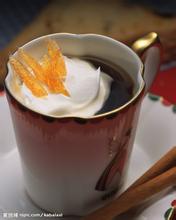What does coffee G1 mean? what does G2 mean? introduction to the taste of varieties treated with semi-red honey.
In order to distinguish good coffee beans from bad coffee beans, we have to grade coffee. Coffee classification is usually based on defect rate, bean size, altitude, green bean density, processing standards, etc., and thus more often a combination of multiple criteria to describe.
In fact, each country is closely related due to various factors such as history, trade interests, climate and topography. We can't compare heroes with each other according to the same standard, the same method of calculating defects, or simply according to altitude. Nor can we compare a certain grade of a country with a certain grade of another country. This is a direct comparison that is wrong and not objective.
Next, Baorong will explore the different classification and classification standards of coffee in the main 12 countries of origin in two phases to see the specific information conveyed by the name of coffee green beans. Recipe: Guatemala SHB (40%), Kilimanjaro AA (30%), Mocha Plateau Hara (30%).
Aromatic-based coffee blends are coffee beans with different characteristics mixed together to make the aroma more intense. Aromatic Guatemala SHB is the main ingredient, accompanied by sour Kilimanjaro beans and natural fruity Mocha Plateau Hara, which can be blended into aromatic coffee.
American coffee blend
Formula: Brazil NO. 2·19 (50%), Mexico AL (30%), Jamaica washed beans (20%).
For those who don't like taste too much, don't like single-item coffee, and only pursue their own taste, American mixed coffee should be the first choice. It uses medium roast coffee beans, mainly Brazilian beans with balanced sour and bitter taste, with sweet and sour Mexican beans and Jamaica washed beans with flavor and bitterness, and the unique American coffee blend is born.
a rich, heavy blend of coffee.
Formulation: Colombia SUP (50%), Brazil NO.2.19 (30%), Java Rob WIBI (20%).
For strong flavors, choose heavy, moderately acidic Colombia beans, followed by balanced Brazilian beans and a rich, bitter blend. If you want to add some sweetness, you can properly match some bitter soft coffee beans.

Important Notice :
前街咖啡 FrontStreet Coffee has moved to new addredd:
FrontStreet Coffee Address: 315,Donghua East Road,GuangZhou
Tel:020 38364473
- Prev

Introduction to the characteristics of Grinding degree of Coffee Golden ratio brewing ratio Flavor Manor
Several years have passed by in a hurry, and we have returned to the field. Now we are in the kitchen, making coffee. Wonderful coffee. The kind of coffee that awakens your gratitude for the good life in the first place every morning. It's art, it's ritual, it's time to share around the table. If you are like us, no one has ever taught you how to properly modulate coffee, or
- Next

Introduction of Coffee West Java Honey Flavor Grinding characteristics of varieties of Fine Coffee beans
Java has a mild, humid and diverse climate that makes it a harvest season all year round, with different kinds of coffee ripening at different times. What they grow is the unique quality of Java coffee beans, the coffee ground by this coffee bean, rich taste, endless aftertaste, can be called high-quality coffee. Many people equate Java coffee with high quality and good taste. The world
Related
- What brand of black coffee is the most authentic and delicious? what are the characteristics of the flavor of the authentic Rose Summer Black Coffee?
- Introduction to the principle and characteristics of the correct use of mocha pot A detailed course of mocha pot brewing coffee is described in five steps.
- Which is better, decaf or regular coffee? how is decaf made?
- How much is a bag of four cat coffee?
- How about four Cat Coffee or Nestle Coffee? why is it a cheap scam?
- Which is better, Yunnan four Cats Coffee or Nestle Coffee? How about cat coffee? is it a fake scam? why is it so cheap?
- How about Cat Coffee? what grade is a hoax? which instant coffee tastes better, four Cat Coffee, Nestle Coffee or G7 coffee?
- Process flow chart of coffee making-Starbucks coffee making process what coffee tastes good at Starbucks
- The top ten best coffee beans in the world Rose summer coffee or Tanzanian coffee tastes good
- Yunnan four cat coffee is good to drink?_four cat coffee is a big brand? four cat blue mountain coffee is fake?

